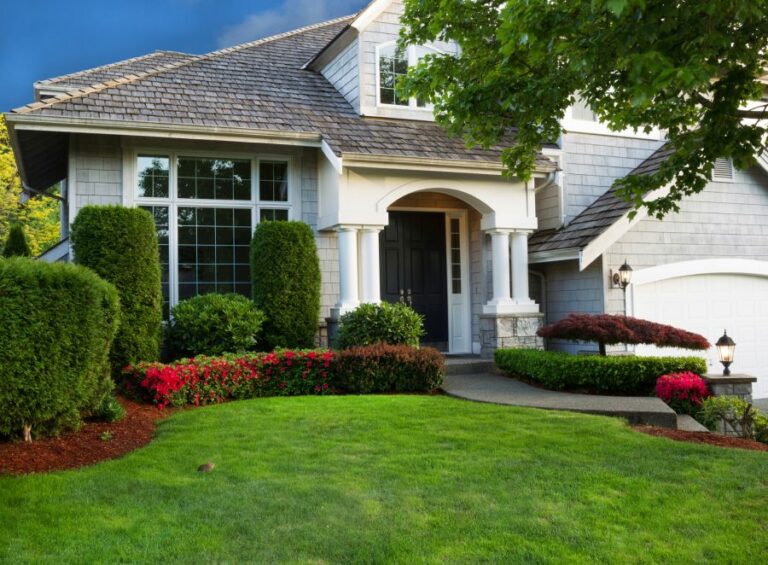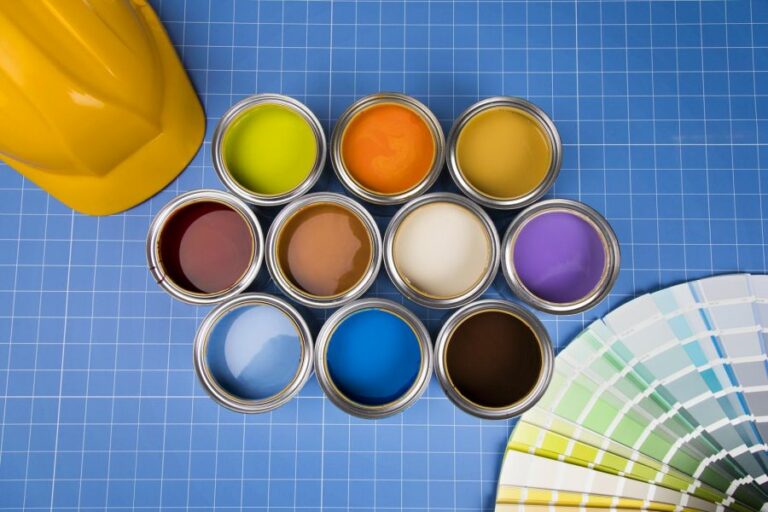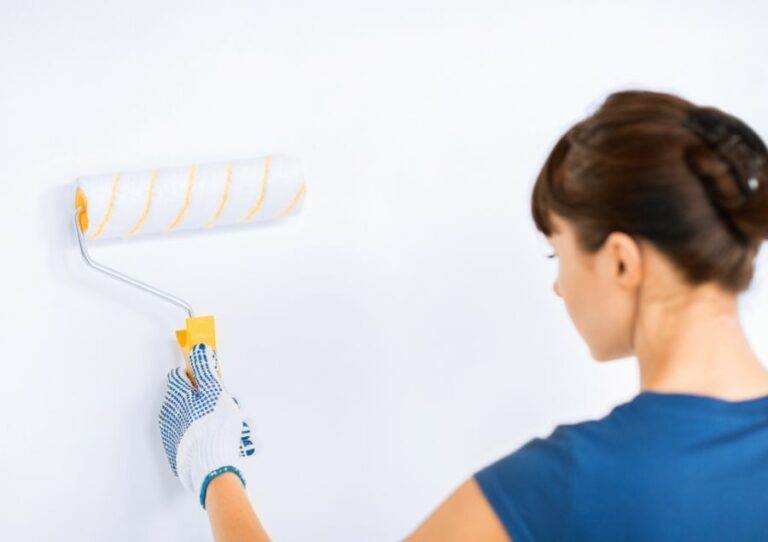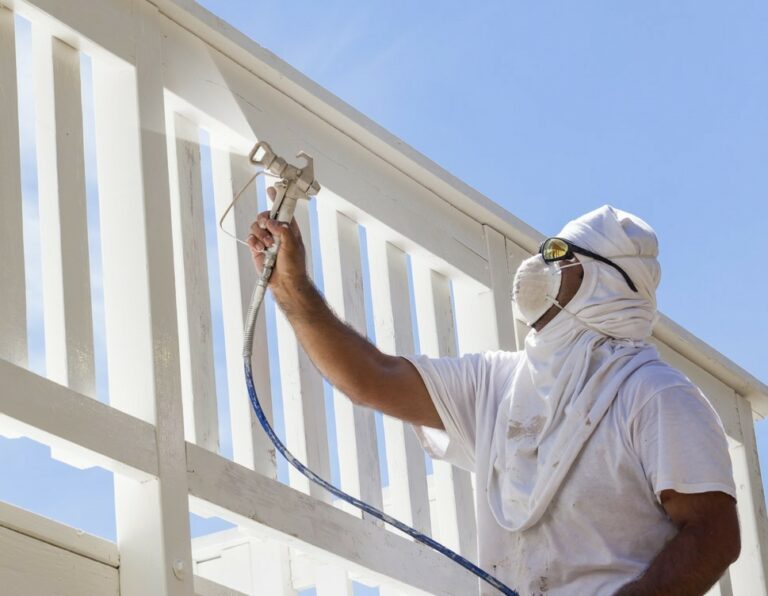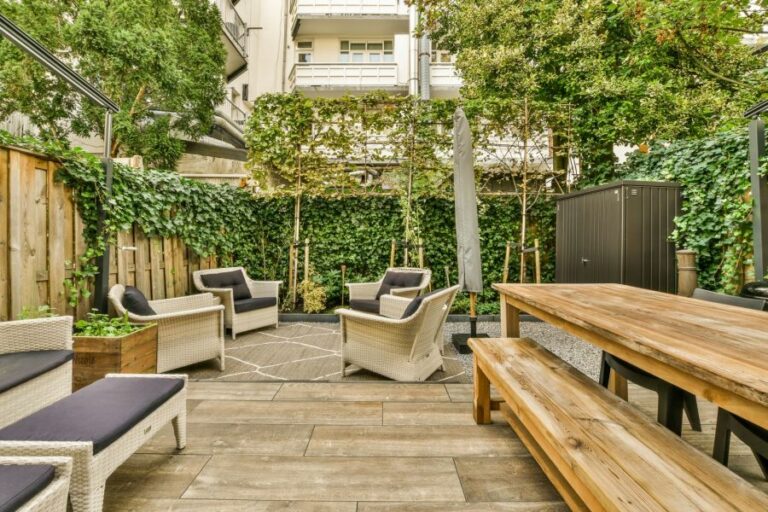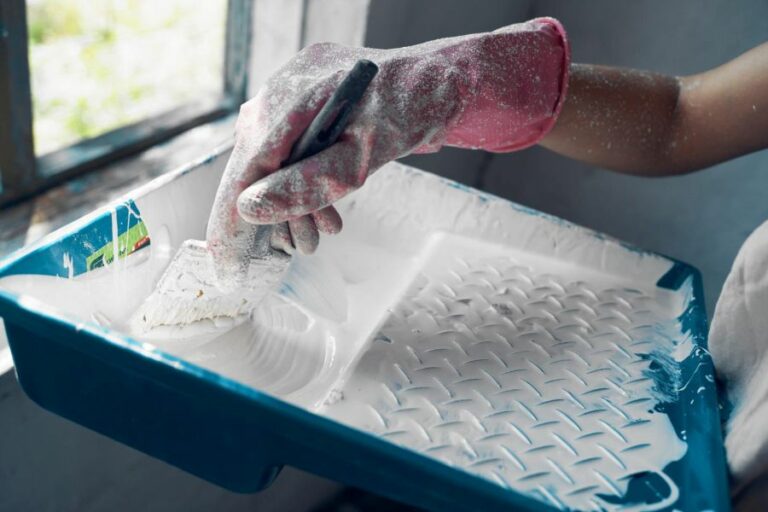Types of outdoor paint. What the pros say
Choosing the right kind of paint can make all the difference when painting outdoor surfaces. Different types of outdoor paint vary in durability, appearance, and even compatibility with certain surfaces. With so many options available, deciding which one to choose can be overwhelming.
What types of outdoor paint are there:Choosing the right type of paint for an outdoor surface is important to ensure durability and resistance to the elements. Oil-based paints are durable and water-resistant but difficult to clean up, while water-based paints are a newer alternative with a faster drying time and less odor. Acrylics are lightweight and suited for decorative outdoor features, while elastomeric paints fill small cracks and gaps, making them ideal for surfaces prone to cracking. Seek advice from professionals for the best results.

In this blog post, we’ll be exploring the different types of outdoor paint to help you decide on your next outdoor painting project. Whether you’re looking to paint your house, fence, or furniture, this guide will provide valuable insights on what paints are available and what factors to consider before purchasing.
Understanding the different types of outdoor paint is vital for anyone working on an outdoor project. This guide covers the most popular types of paint, including their benefits and drawbacks, to help you choose the right one for your needs.
Contents
An Overview of the Varieties of Outdoor Paint Available
When it comes to painting outdoor surfaces, it is important to choose the right type of paint. Not all paints are suitable for outdoor use, and using the wrong type of paint can result in a finish that fades, chips, or peels much more quickly than expected.
This article will explore the various types of outdoor paint available and explain when each type is the most appropriate choice.
• Oil-Based Paints
Oil-based paints are a popular choice for outdoor painting projects thanks to their durability and resistance to moisture. They are typically made from synthetic resin, which gives them a glossy finish and enhances their water resistance.
The downside to oil-based paints is that they can be difficult to clean up after use because they require mineral spirits or other chemicals to be removed. They also take a long time to dry and emit a strong odor that can be unpleasant to work with.
I highly recommend oil-based paint for surfaces exposed to harsh weather conditions, such as a front door, shutters, or trim. They last longer than their water-based counterparts and are better suited for high-traffic areas that experience a lot of wear and tear.
• Water-Based Paints
Water-based or latex paint is a newer alternative to oil-based paints. They have a faster drying time, are easier to clean up, and produce less odor. Water-based paints are less likely to crack, peel or fade over time.
While water-based paint may not be as durable as oil-based paint, it is still an excellent choice for outdoor painting projects. It is suitable for stucco, cement, and brick surfaces and can even be used on wooden decks or siding.
Using water-based paint for outdoor projects is highly recommended for beginners due to its ease of use and easy clean-up.
• Acrylic Paints
Acrylic paints are yet another type of outdoor paint used for painting surfaces that are not too exposed to the elements, such as sculptures or decorative features in a garden. Acrylic is lightweight, water-resistant, and dries quickly. It also produces a softer, matte finish, ideal for painting outdoor sculptures.
Acrylic paints are not recommended for concrete, brick, or wood surfaces, as they tend to peel or chip over time.
• Elastomeric Paints
Elastomeric paint is a type of durable exterior paint specifically designed to fill small cracks and gaps in the painted surface. It is made from a synthetic polymer and is extremely long-lasting, making it an excellent choice for surfaces prone to cracking, such as stucco.
Elastomeric paint is best suited for surfaces that experience stress, such as vertical walls exposed to extreme temperature changes. However, while elastomeric paint is very flexible, it is also much thicker than other types of paint and can be difficult to work with.
I recommend using elastomeric paint for outdoor surfaces prone to cracking or requiring extra durability.
• My opinion
When it comes to choosing the right type of outdoor paint, there are a lot of factors to consider. Factors such as the type of surface to be painted, the level of exposure to the elements, and the desired finish all come into play.
If you’re still unsure which type of paint is best for your outdoor painting project, it’s always a good idea to seek advice from a professional. They can help steer you in the right direction and ensure you get the best possible results.
Type of Outdoor Paint | Description |
|---|---|
Acrylic paint | A water-based paint that is durable and long-lasting, resistant to fading and weathering |
Oil-based paint | A paint that uses an oil-based solvent as its medium, providing excellent adhesion and resistance to moisture and UV rays |
Epoxy paint | A two-part paint that dries to a hard, durable finish, ideal for high-traffic areas such as garage floors |
Enamel paint | A paint that dries to a glossy, hard finish, suitable for metal, wood, and other surfaces |
Latex paint | A water-based paint that dries quickly and is easy to clean up with soap and water, ideal for outdoor projects such as fences and decks |
Stain | A semi-transparent or opaque product that penetrates the surface of the wood and other porous materials, protecting them from the elements while allowing the natural texture to show through |
Spray paint | A type of paint that is applied through a pressurized spray can, providing a smooth, even finish for outdoor projects such as furniture and lawn equipment |
What is the optimal outdoor paint choice?
When it comes to painting the exterior of your house, there are several things to consider before you decide what kind of paint is best for your project. Factors like the weather conditions in your area, the type of siding or trim you’re painting, and the color you choose can all influence which type of paint is right for you.
In this article, I’ll share my experience with exterior paint and explain the different types available to help you make an informed decision.
• Types of Exterior Paint
The two main types of paint for exteriors are oil-based and water-based (latex). While oil-based paints were once the go-to choice for outside projects, most professionals now recommend water-based paints for most homes. Here’s why:
– 1. Water-based Paint
Water-based or latex paint is a popular and versatile choice for exterior surfaces. It dries quickly, has low VOC emissions, and is easy to clean up. It’s also more durable and resists fading better than oil-based paint. There are several different types of water-based paint, including:
- Acrylic: Acrylic paints are known for their flexibility and durability. They’re resistant to rain, snow, and extreme temperatures, making them an excellent choice for homes in areas with varying climates. They’re also good for brick, stucco, or concrete siding homes.
- Vinyl Acrylic: Vinyl acrylic paint is made from a combination of vinyl and acrylic. It provides excellent adhesion and is resistant to dirt, moisture, and mildew. This type of paint is best for homes with vinyl or aluminum siding.
- Elastomeric: Elastomeric paint is a highly elastic compound with a rubber-like quality that can withstand significant expansion and contraction. It’s an excellent choice for homes with stucco, masonry, or concrete exteriors.
– 2. Oil-based Paint
While oil-based paints may be more durable, they also have significant drawbacks. They require more time to dry, have higher VOC emissions, and are more challenging to clean up. However, they do have their advantages:
- Alkyd: Alkyd paint is a blend of oil and resin, making it highly durable and resistant to weather and temperature changes. It’s an excellent choice for homes with wooden siding, including shingles or clapboards.
- Oil-based Enamel: Oil-based enamels are highly durable and provide a glossy finish. They’re typically used for doors or shutters.
• The Importance of Priming
Before you paint, using a high-quality primer designed specifically for exteriors is essential. Priming helps to ensure the paint adheres to the surface properly, and it also helps to prevent peeling, cracking, and chipping. It’s especially important if you are painting over a surface that has never been painted before or using water-based paint over an oil-based one.
• Choosing the Right Color
When it comes to choosing the right color, don’t forget to take into consideration the amount of sunlight the area receives. If the area is in direct sunlight for most of the day, you may want to avoid darker colors, which are more likely to fade. Similarly, if the area is shaded, you might opt for a lighter color to brighten the space.
• Conclusion
Ultimately, the type of paint you choose will depend on your preferences, the materials you’re painting, and the weather conditions in your area. While oil-based paints may have been the go-to choice in the past, most experts now recommend water-based paints for their durability and versatility.
Whichever type of paint you choose, just be sure to prime the surface properly, and you’ll have a beautiful, long-lasting finish that will protect your home for years to come.
As someone with a lot of experience in exterior painting, I highly recommend using water-based paint, specifically acrylic. It dries quickly, resists fading, and is the most durable option. Additionally, be sure to use a high-quality primer, and don’t forget to consider sunlight when choosing your color. Happy painting!
Which Type of Exterior Paint Offers the Highest Durability?
As someone who has worked in the paint industry for several years, I can attest to the importance of choosing the right paint for your exterior surfaces. Exterior paints must be durable enough to withstand harsh weather conditions, UV rays, and other environmental factors that can cause fading or damage over time.
So, what is the most durable type of exterior paint? In my experience, acrylic latex paints are the best option for long-lasting durability.
• Acrylic Latex Paints
Acrylic latex paints are water-based paint with acrylic resin as their main ingredient. They are known for their durability, elasticity, and resistance to weathering, chalking, peeling, and fading. These paints can be used on various surfaces, including wood, metal, and masonry.
One of the benefits of using acrylic latex paints is that they dry quickly and have low VOC (volatile organic compound) emissions, which makes them a more eco-friendly option for those concerned about the environment.
• Other Types of Paints
While several other types of exterior paints are available, they may not be as durable as acrylic latex paints. Oil-based paints, for example, can provide excellent protection against the elements, but they are more prone to chalking and cracking over time.
Some other options include:
- Epoxy paints: These are known for their durability and water resistance, but they are primarily used on industrial or commercial surfaces.
- Alkyd paints: These oil-based paints offer good adhesion and durability but are more difficult to clean up and have higher VOC emissions.
- Urethane paints: Urethane paints are highly durable and offer excellent color retention, but they can be expensive and require professional application.
• Recommendations
Based on my experience, I recommend using acrylic latex paints for your exterior surfaces. These paints provide excellent durability, resist fading and weathering, and are easier to apply and clean up. Also, when choosing paint, make sure to look for products that are specifically designed for exterior use.
In addition to choosing the right type of paint, keeping your exterior surfaces well-maintained is also important for long-lasting durability. Regular cleaning and maintenance can help prolong the life of your paint job and keep your home looking its best.
In conclusion, acrylic latex paints are the way to go when choosing the most durable exterior paint. With their excellent durability, resistance to weathering and fading, and easy application and cleanup, they are the ideal choice for any homeowner looking for a long-lasting paint job.
Type of Exterior Paint | Durability Rating |
|---|---|
Acrylic | Good |
Oil-based | Very Good |
Epoxy | Excellent |
Latex | Fair |
What is the most effective multi-functional exterior paint?
When it comes to maintaining and upgrading your home’s exterior, one of the most important decisions homeowners face is choosing the right type of exterior paint. There are many different types of paint on the market, each with its strengths and weaknesses. In this article, we’ll look at some of the key factors to consider when choosing an all-purpose exterior paint and offer our recommendations of the best products on the market.
• Factors to Consider
There are several key factors to consider when shopping for an all-purpose exterior paint:
- Durability: One of the most important factors to consider is the durability of the paint. You want a paint that will stand up to the elements, resist fading and chalking, and maintain its color over time.
- Coverage: Good coverage is also important. You want paint that spreads easily and provides good coverage with just one coat.
- Ease of application: You don’t want to spend hours struggling to apply a difficult-to-work-with paint. Look for a paint that is easy to apply and dries quickly.
- Price: Finally, price is an important consideration. While you don’t want to skimp on quality, you also don’t want to overspend on paint that doesn’t deliver the desired results.
• Our Recommendations
Based on our experience, we have found that the following paints offer the ideal combination of durability, coverage, ease of application, and price:
– 1. Behr Premium Plus Ultra
This paint is a favorite among homeowners and contractors alike. It is easy to apply and dries quickly, providing excellent coverage with just one coat. The paint is also highly durable and resists fading, cracking, and peeling. Additionally, it is available in many different colors and finishes, making it easy to find a shade that complements your home’s exterior.
– 2. Sherwin-Williams Duration
Duration is considered one of the best paints for its durability and longevity. This paint is formulated with advanced Permalast technology, which helps it resist cracking, peeling, and fading. It can be applied in temperatures as low as 35 degrees and promises to last at least 10 years.
While the paint is more expensive than other options on the market, its longevity and ease of application make it a smart investment.
– 3. Benjamin Moore Regal Select Exterior
Another premium option, Regal Select Exterior, delivers excellent coverage and durability thanks to its advanced resin technology. The paint is self-priming and dries quickly, allowing for easy application. It also resists fading and chalking, keeping your home looking beautiful for years.
– 4. Valspar Duramax Exterior Paint
Finally, Valspar Duramax Exterior Paint is a great option for homeowners on a budget. This paint is affordable and easy to apply, with good coverage and a low-odor formula. It also resists fading, cracking, and peeling, making it an excellent value for the price.
• Conclusion
When choosing the best all-purpose exterior paint, several important factors must be considered. While there are many different products on the market, we recommend Behr Premium Plus Ultra, Sherwin-Williams Duration, Benjamin Moore Regal Select Exterior, and Valspar Duramax Exterior Paint best options available. Each of these paints offers excellent durability, coverage, and ease of application at a fair price.
What is the prevailing choice for exterior paint?
As an experienced painter, I have encountered several types of exterior paint in my career. However, I think the most common exterior paint is latex-based paint.
• Latex-based Paint:
Latex-based paint is a form of water-based paint that contains synthetic polymers. They are easy to use, fast-drying, and ideal for exterior surfaces due to their durability and resistance to weather elements such as rain, sun, and wind. Latex paint is known for its flexibility, which prevents cracking, peeling, and fading of the paint.
• Why is Latex-based Paint so Common?
Latex-based paint is the most common exterior paint for many reasons. Firstly, it is widely available and relatively affordable compared to other forms of exterior paint. Secondly, latex paint is easy to apply and can be applied by homeowners and professionals alike. It can also be used on exterior surfaces, including wood, metal, and concrete.
Additionally, latex paint is available in different finishes, including glossy, semi-glossy, and matte finishes. This means that homeowners can choose the finish that best suits their needs, whether they prefer a shiny, reflective appearance or a less glossy one.
• Recommendations from Experience
After years of painting exterior surfaces, I recommend choosing latex-based paint when repainting your home’s exterior. However, there are other factors to consider before settling for any paint. For instance, you must consider the type of surface you are painting, the location, and the weather conditions in your area. These factors will determine the paint you should use to ensure its durability and longevity of the paint.
In conclusion, latex-based paint is the most common exterior paint due to its availability, affordability, and durability. However, other factors must be considered when selecting exterior paint to ensure optimal results. Regardless of the paint you choose, always adhere to the manufacturer’s instructions and prepare the surface to ensure optimal results.
Exterior Paint Type | Frequency |
|---|---|
Latex | 60% |
Oil-based | 30% |
Acrylic | 10% |

